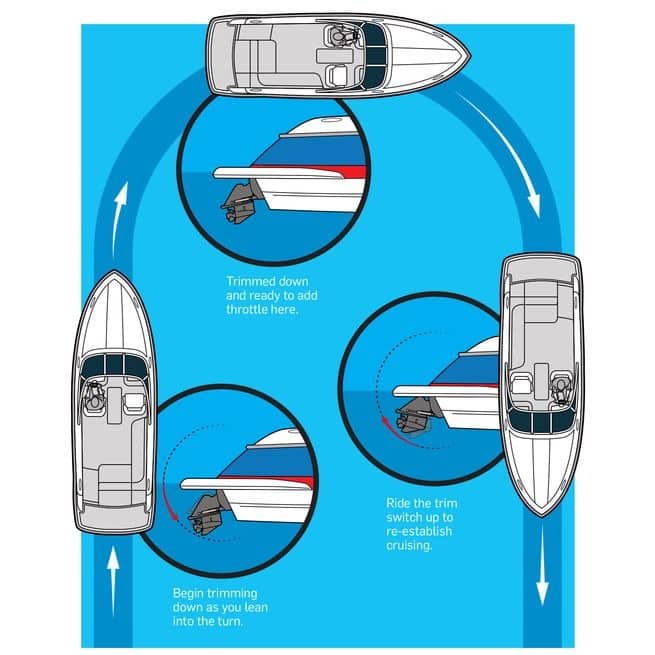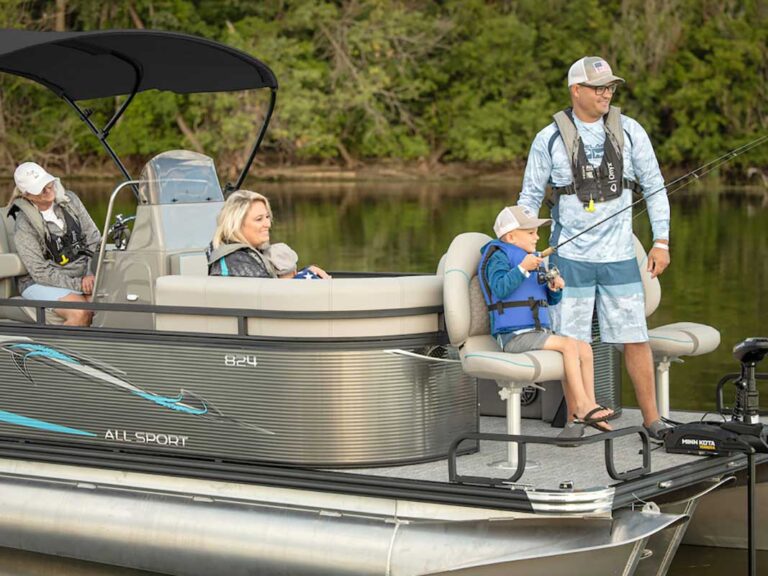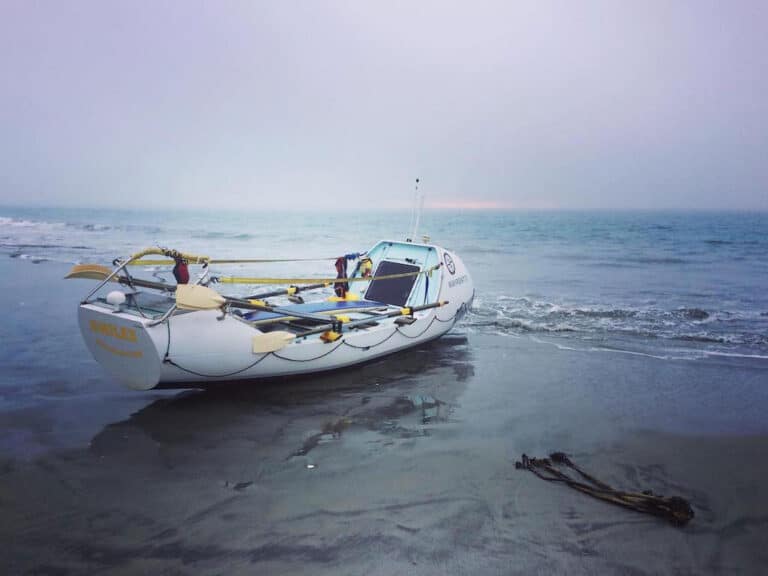
If emails to the editor and anecdotal information from boatbuilders and boat dealers is any indication, a substantial number of boaters express confusion about how to trim their boats’ engines or drives. Certainly this applies to getting on plane, adjusting for load, trimming for ride comfort or to suit sea conditions, and more. Let’s review the basic principles of how to trim an outboard or sterndrive boat through turns.
1. Into the Turn
While cruising along, you’ll approach the turn with your drive trimmed out (up). This allows you to maintain some speed and ensures the boat begins tracking through the turn on its after sections. You do not want to approach a sharp turn with the trim all the way in (down) because that might cause the bow to dig in, and the boat theoretically could spin out or even swap ends. Instead, begin the turn at cruising trim, and then “ride” the trim switch down as you approach the apex of the turn.
2. Round the Curve
As the boat reaches the apex of the turn, you feel it begin to slow down because you now have a larger portion of the hull length in the water. With the drive trimmed down, the stern is less likely to break out and you can accelerate safely, adding the rpm necessary to regain — or even maintain — speed. The timing of this depends upon the boat (boats with more buoyancy in the bow might require less trim) and sea conditions (you’ll be going slower with more negative trim in choppier water).
Read Next: How to Properly Trim a Sterndrive
3. Out of the Turn
As you leave the apex of the turn and accelerate onto your new course heading, you’ll do the opposite of what you did in Step No. 1. Ride the trim switch, trimming the drives out (up) while accelerating until you find your cruising speed and trim. Of course, now that you are headed in a different direction, you’ll be hitting waves and running with respect to the wind differently than you were before the turn. Adjust as required; there is no “perfect” amount of trim for a given boat speed.








